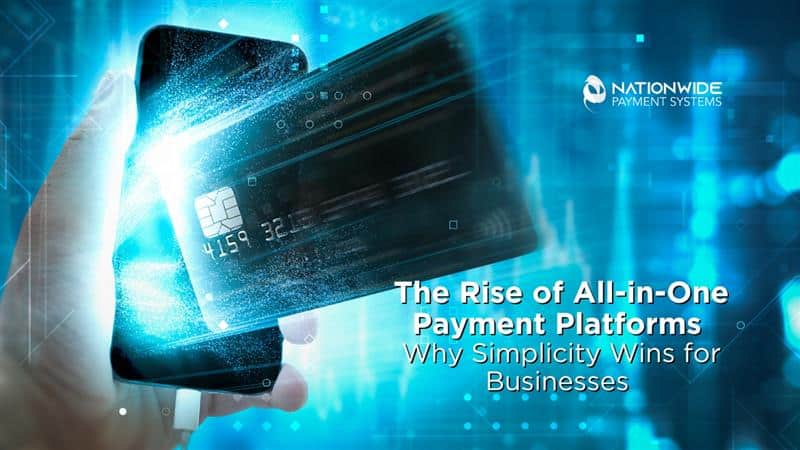All-in-One Payment Platforms: Simplifying Transactions for Businesses
All-in-one payment platforms are transforming how businesses manage transactions by integrating various payment methods—such as credit cards, ACH, and digital wallets—into a single, automated system. As a result, they reduce errors, boost efficiency, and streamline operations.
Key Features and Benefits of payment platforms
- Unified Dashboard: With this, businesses get real-time visibility into all transactions from one central hub.
- Multiple Payment Channels: In addition, they can accept card payments, mobile wallets (e.g., Apple Pay, Google Pay), and ACH.
- Enhanced Security: To ensure safety, these platforms include real-time fraud monitoring, AI-driven threat detection, and PCI-DSS compliance.
- Automated Operations: Consequently, auto-invoicing and recurring billing minimize manual tasks, potentially lowering costs by up to 30%.
- Seamless Integration: Thanks to standardized APIs, businesses can connect platforms with existing tools for smoother operations and reconciliation.
- Scalability: As businesses grow, the platform adapts to handle higher transaction volumes without disruption.
- Advanced Analytics: Moreover, customizable dashboards and reports provide insights into sales trends, conversion rates, and cash flow.
Business Impact
- Small Businesses & E-commerce: By leveraging these platforms, even small companies can access advanced payment technologies—helping them lower costs, improve cash flow, and reduce cart abandonment.
- Restaurants: Similarly, these tools speed up service, enhance point-of-sale accuracy, and simplify staff and inventory management.
Choosing the Right Platform
Before deciding, businesses should evaluate pricing, security, integration capability, and customer support. Ideally, the platform should meet today’s needs while also scaling with future growth.
For example, solutions like NPSONE from Nationwide Payment Systems offer this fully integrated experience. Compared to Square (primarily in-person) or Stripe (online-first), NPSONE delivers a more unified system. Additionally, industry-specific platforms like ClickBillr streamline payments for sectors such as property management.
Key Considerations:
- Pricing Models: Look beyond per-transaction fees to include monthly charges, setup costs, and fees for chargebacks or currency conversion. Transparency in pricing is crucial to avoid unexpected expenses.
- Essential Security Features: Prioritize platforms with robust data encryption, PCI-DSS compliance, advanced fraud detection tools, and secure login methods like two-factor authentication. Regular audits and updates are also vital.
- Integrations: Seamless integration with existing business tools (e.g., accounting software like QuickBooks, e-commerce platforms like WooCommerce) is critical for efficiency, reducing manual data entry, and synchronizing financial reporting.
- Customer Support & Scalability: Reliable 24/7 customer support and dedicated account managers are essential for minimizing downtime. The platform must also be scalable to handle increasing transaction volumes and expand features as your business grows.
NPSONE vs. Competitors (Square, Stripe):
NPSONE aims to differentiate itself by offering:
- Unique Features: An intuitive interface for quick, error-free transactions, instant refunds, recurring billing, multi-currency capabilities, and robust real-time reporting.
- Competitive Pricing: A transparent model with reduced transaction fees and minimal monthly charges, designed to be more cost-effective and predictable as transaction volumes increase, unlike some competitors where fees can accumulate.
- Advanced Security: End-to-end encryption, multi-factor authentication, and continuous real-time fraud detection are included in the standard offering, providing strong security without extra costs.
Why All-in-One Platforms are Rising:
The shift towards integrated payment solutions is driven by:
- Technological Advancements: Mobile payment adoption, contactless transactions, and the need for sophisticated security features.
- E-commerce Growth: The demand for platforms that can handle high transaction volumes and offer diverse payment options for seamless checkout experiences.
- Need for Integration: Businesses increasingly require payment solutions that integrate with their existing accounting, CRM, and e-commerce tools to eliminate redundant processes and provide comprehensive insights.
Conclusion:
All-in-one payment platforms, exemplified by NPSONE, streamline operations, enhance security, and provide valuable insights, making them a strategic choice for businesses looking to simplify transaction management, reduce administrative overhead, and prepare for future growth in an increasingly digital marketplace.
CLICK HERE TO FIND MORE ABOUT OUR PROGRAMS
FAQ: Frequently Asked Questions
What distinguishes an all-in-one payment platform from traditional payment systems?
It consolidates various payment methods into one system, streamlining processes and reducing administrative overhead.
How does an integrated platform improve operational efficiency for merchants?
By automating tasks, providing real-time transaction data, and reducing manual errors, it enables quicker trend identification and more informed decision-making.
What level of security can businesses expect from these platforms?
They use robust measures such as end-to-end encryption, PCI-DSS compliance, and real-time fraud detection to ensure customer data remains protected.
Can all-in-one payment platforms scale with business growth?
Yes, they are designed to handle increased transactions and integrate with additional systems as business needs evolve.
How do advanced reporting features benefit businesses using these platforms?
They deliver insights into sales trends, customer behavior, and transaction performance to help optimize strategies and manage inventory.







